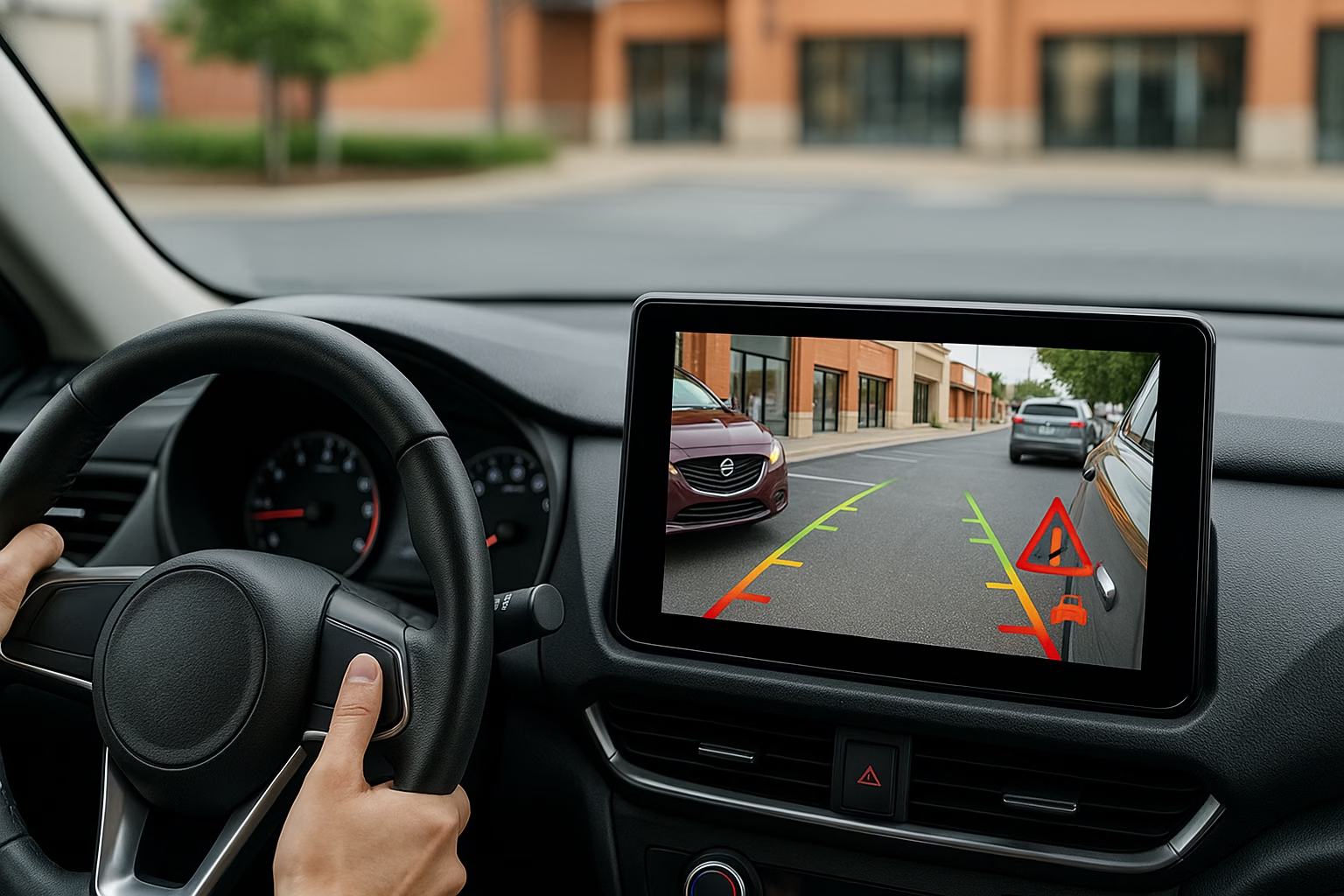Rear cross traffic alert is one of those features that quietly make everyday driving less stressful. If you have ever reversed out of a busy supermarket car park, you know how hard it is to see vehicles approaching from either side. This advanced driver assistance system uses sensors in the rear bumper to monitor the area behind your vehicle and warn you when something is about to cross your path. In this article we explain what rear cross traffic alert does, how it works, and why it is worth paying attention to.
Rear cross traffic alert is a warning system that activates when you select reverse gear. On most vehicles the same radar sensors that power the blind spot monitoring system also scan the rear corners of your car. When another vehicle, cyclist or pedestrian approaches from the left or right while you are reversing, the system sounds an audible alert and flashes a visual warning on the dashboard or side mirrors. Some premium models will even apply the brakes automatically if you do not react in time.
The technology behind rear cross traffic alert is fairly straightforward. Radar sensors located inside the rear bumper emit radio waves that bounce off nearby objects. The system’s control unit interprets the returned signals to determine if something is moving toward your reversing path. If an object is detected within a predefined range and speed, the system triggers the alerts. Because it uses radar rather than cameras, rear cross traffic alert can work in low light and does not rely on a clean lens. It is important to note that the feature only operates at low speeds – usually under 5 km/h – and only when reverse gear is selected.
Why does this feature matter? According to road safety studies, a significant number of parking lot accidents happen while drivers are backing out of spaces and cannot see approaching traffic. Rear cross traffic alert reduces these rear-end collisions by roughly a quarter because it gives you extra awareness of what you cannot see. It is particularly helpful for taller vehicles with poor rearward visibility, such as SUVs and utes. Even if you drive a small car, the system can give you peace of mind in crowded or angled parking spaces where your view is blocked.
Like any driver assistance feature, rear cross traffic alert has its limitations. The sensors only monitor a limited zone directly behind the vehicle. Fast-moving traffic or objects outside the detection area may not trigger the warning. The system can also give false alerts if there are stationary objects close to the rear bumper or if heavy rain or snow interferes with the radar signals. When driving out of angled spaces, the detection area may not align perfectly with oncoming traffic. These limitations mean you should not rely solely on the system to keep you safe – always check your mirrors and look over your shoulder before reversing.
For the technology to work properly, the sensors must be kept clean and correctly aligned. Dirt, mud, or aftermarket accessories such as tow bars and bike racks can obstruct the radar units. Regularly washing the rear bumper and avoiding covering the sensors will help ensure reliable operation. If your vehicle has been involved in a minor collision or you have had a rear bumper repaired or repainted, the sensors may require calibration by a qualified technician to restore accuracy. Our article on keeping your cameras and sensors clean has more tips for maintaining your ADAS equipment.
Rear cross traffic alert works best when you integrate it with good driving habits. Always back out slowly and be prepared to stop if you hear or see a warning. In vehicles equipped with automatic braking, keep your foot lightly on the brake pedal so the system can intervene if necessary. Remember that the same sensors often power blind spot monitoring, so you may also receive alerts while driving forward. Learning how these systems interact will make you a more confident and attentive driver. For more guidance on using blind spot monitoring effectively, see our guide on blind spot monitoring and how to use it safely.
Rear cross traffic alert is a simple feature that can make reversing safer and less stressful. By understanding how it works and respecting its limitations, you will get the most value from this piece of technology. Combine it with good observational skills and you will significantly reduce the risk of minor collisions in car parks. Advanced driver assistance is designed to support you, not replace your judgement. With that mindset, features like rear cross traffic alert can help you enjoy driving with greater confidence.

Hiran Alwis is an automotive lecturer and ADAS specialist with over 15 years of experience in diagnostics, advanced safety systems, and technical training. He founded ADAS Project to help everyday drivers and workshop technicians understand and safely use advanced driver assistance systems.

[…] obstruct them. If you’re unsure what each sensor looks like, our detailed guide to features like rear cross traffic alert explains typical sensor locations and why keeping them clean […]
[…] Rear Cross Traffic Alert – Warns you of traffic when reversing […]